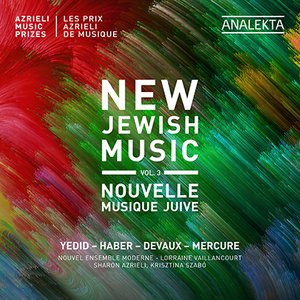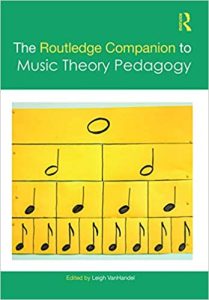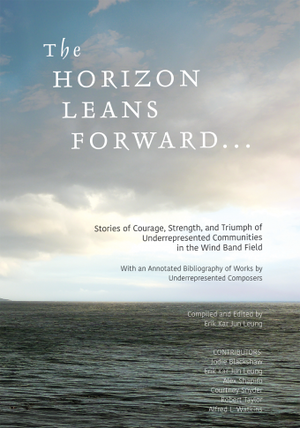
Ensemble: UBC Symphony Orchestra, UBC Choirs
Jonathan Girard, conductor
Featured UBC composers: Dorothy Chang, Stephen Chatman, Keith Hamel
Featured UBC artist: Paolo Bortolussi
Recording details: Redshift Records, released October 1, 2021
Link

Ensemble: UBC Symphony Orchestra, UBC Choirs
Jonathan Girard, conductor
Featured UBC composers: Dorothy Chang, Stephen Chatman, Keith Hamel
Featured UBC artist: Paolo Bortolussi
Recording details: Redshift Records, released October 1, 2021
Link

Artist: Krisztina Szabó
Singing 2020 Azrieli Prize Winner, Yotam Haber’s Estro Poetico Armonico III
Recording details: Analekta, released October 1, 2021
Link
Edited by: VanHandel, Leigh
Publication details:The Routledge Companion to Music Theory Pedagogy
Weblink: https://routledge.com
Outstanding Multi-authored Collection Award given for a distinguished multi-author collection for a volume edited by Leigh VanHandel, The Routledge companion to music theory pedagogy. It’s the first pedagogically-oriented scholarship to win a Society for Music Theory Publication award.

From publisher: Today’s music theory instructors face a changing environment, one where the traditional lecture format is in decline. The Routledge Companion to Music Theory Pedagogy addresses this change head-on, featuring battle-tested lesson plans alongside theoretical discussions of music theory curriculum and course design. With the modern student in mind, scholars are developing creative new approaches to teaching music theory, encouraging active student participation within contemporary contexts such as flipped classrooms, music industry programs, and popular music studies.
Author: Julia Ulehla
Publication details: PhD Thesis for the University of British Columbia
Weblink: ubc.library.ca
Description:
|
Throughout the first half of the 20th century, biologist/ethnomusicologist Vladimír Úlehla (1888-1947) transcribed hundreds of folk songs from Strážnice, his hometown in the rural region of Slovácko, which lies at the border of present-day Czech and Slovak Republics. For Úlehla, Slovácko songs were living organisms, intimately related to the landscape and carried through time by family clans. Some of his interlocutors were relatives. Others were relations forged by decades of friendship. Vladimír was my great-grandfather, and his monograph Živá píseň (Living Song, 1949) provided a means for me to enter into a musical-cultural heritage that was ruptured when my father escaped communist Czechoslovakia and entered North America as a refugee. Informed by song transcriptions, Vladimír’s ideas about living song, childhood experiences musicking with family members, and ethnographic fieldwork, this dissertation seeks to address the life of song, even when hybridity, rupture, and transplant figure into that inquiry. Through a networked, rhizomatic framework and mixed-methods approach, this research brings a number of theoretical, historical and methodological contexts to bear on addressing the living nature of song. Family oral history, interviews with musicians, and folk song poetics gesture towards a Slovácko cosmology that inscribes a world co-inhabited by humans, ancestral spirits, birds, trees, waters, mountains, and storms, all of which are conceived as animate and interrelated. Participant observation, my own research-creation and subsequent song-bartering (Bovin 1988) offer glimpses into the powerful role that songs play in connecting people with one another and with their ancestors. I describe how during fieldwork, the cultural hybridity of my performing body called many complex and painful histories into question and disrupted folk song’s alliance with cultural purity, which was especially provocative in an era of heightened xenophobia. Weaving together a consideration of the formal qualities of songs, their affectual, emotional power, and the historical/political contexts in which they appear, Slovácko songs emerge as agentive entities with which a human might collaborate in a variety of culturally-specific performance ecologies, thereby opening possibilities for ethical, anticolonial research practices and interpersonal encounters within a heterogeneous, multicultural society facing crises of social injustice, the COVID-19 pandemic, and impending climate catastrophe.
|
Author: Vellutini, Claudio
Publication details: In Tra ragione e pazzia: Saggi di esegesi, storiografia e drammaturgia musicale in onore di Fabrizio Della Seta, ed. by Federica Rovelli, Claudio Vellutini, Cecilia Panti, 656. Pisa: ETS, 2021
Weblink: www.edizioniets.com
Author: Wong, Lucas
Publication details: NATS Journal of Singing
Excerpt:As vocal pianists throughout our studies and careers, we all work with piano reductions encountered in choral and operaticrepertoire. Singers, who study these works through the lens of a piano score or reduction, depend on accompanists’ or coaches’ expertise in realizing these scores, while adapting accordingly to different needs in their preparation: learning notes, hearing underlying harmonies and counterpoints, consolidating the playing/singing with a stronger rhythmic sense, drilling a difficult passage, and preparing for the first rehearsal with the conductor and orchestra.
Authors: Poudrier, Ève, Sapp, C.S., Shanahan, D
Publication details: ICMPC ESCOM 2021: Connectivity and diversity in music cognition, 28-31 July
2021
Weblink: https://drive.google.com/file/d/1hCtYDdTHfb3Txo2ryT1ZS2JzL8tT5I6U/view and https://www.youtube.com/watch?v=A8lk36AlfPY
Abstract: The goal of the present study is to identify the cognitive and affective correlates of rhythmic complexity. Specifically, we hypothesize that there is a relationship between the structural features that pertain to polyrhythmic complexity (as measured through onset density and entropy), and perceived cognitive and affective qualities.

Author: Taylor, Robert
Book: The Horizon Leans Forward: Stories of Courage, Strength, and Triumph of Underrepresented Communities in the Wind Band Field
Publisher: GIA Publications
Weblink: https://www.giamusic.com/
Abstract: At a time when the calls for diversity, equity, and inclusion are stronger and more important than ever, The Horizon Leans Forward . . . amplifies the talent and voices of the many underrepresented communities in the wind band field.
Compiled by Erik Kar Jun Leung, and with contributions from a diverse team of distinguished wind band professionals, this book shares the profound insights and firsthand experiences of people of color, women, and LGBTQIA2S+ individuals working in the wind band field.
Central to this text is the annotated bibliography showcasing more than 200 gifted composers from underrepresented communities along with more than 400 of their best works for wind band, Grades I–VI. Each entry offers a brief biography of the composer as well as pertinent publication information and descriptions of each work.
This significant volume takes an honest look at the past and present state of the wind band profession and lays out a bold and promising vision for the future, one in which there is an equitable and universal representation of all people in all areas of the field.
Source: https://www.giamusic.com/store/resource/the-horizon-leans-forward-book-g10369
Author: Robert Komaniecki with Anabel Maler
Publication details: Society for Music Theory, Volume 27, Number 1, March 2021
Weblink: mtosmt.org
Abstract:The art of signed music involves the use of rhythmicized signs from a signed language, such as American Sign Language (ASL), in a musical context. Signed music encompasses a variety of subgenres, including ASL hip hop or “dip hop.” A typical dip hop performance involves a Deaf or hard-of-hearing artist simultaneously performing vocalized and signed rapping over a looped background beat. Although dip hop emerged as a grassroots movement in the early 1990s, it has received little analytical attention in the scholarly literature on hip hop. In this paper, the authors combine techniques adapted from analyzing rhythm in non-signed rap music with techniques adapted from analyzing non-rapped signed music to analyze the rhythmic flow of tracks by dip hop artists Sean Forbes, Wawa, and Signmark. The authors demonstrate that dip hop artists have developed genre-specific rhythmic paradigms and tropes to convey the periodicity and rhyme that are fundamental to rap music. Specifically, we address the alignment of rhythm and meter in signed and vocal rap and the conveyance of a repeated “beat” through rhythmic signing. The analyses of dip hop tracks reveal important differences between dip hop and vocal rap, as well as differences between the conventions of dip hop and ASL poetry.